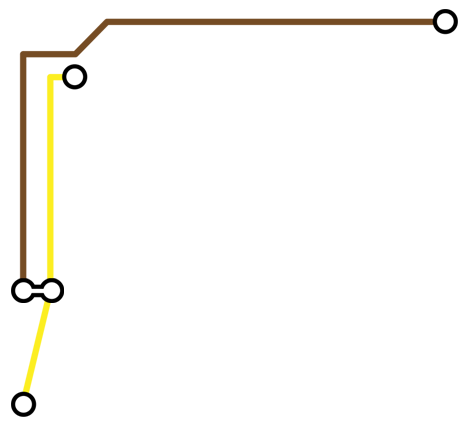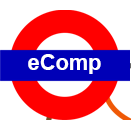Growth of eComp
Since eComp was first implemented, the program has grown significantly. This growth, in part, is because of the help of the graduate students who have worked in the model. For instance, after piloting the program the first semester, we asked the graduate students who worked with us as IAs to help with an assessment, scoring portfolios to figure out if students were learning the intended outcomes of the course. We also assessed eComp classes against f2f first-year writing courses, in an effort to learn whether or not the online students were fulfilling the outcomes as well as their f2f counterparts. Upon learning the results of the assessment, we made changes to the online curriculum, including adding more discussion boards regarding the course outcomes and creating various videos that would help students understand certain concepts. In addition, the graduate students helped generate active-learning discussion boards that prompted students to use course tools. For instance, one such discussion board asked students to find an advertisement and perform a visual analysis using Jing, which helped students become familiar with screencapture software that they could use to develop their multimodal texts throughout the semester.
Improving our Training via the Pedagogy Course
As noted in the Professor Reflection, the graduate students and the ideas they bring to the seminar can continue to influence the structure of the course, which can only help to inform future instructors of eComp as they enter this method of training. In addition, the students in the pedagogy class work closely with the seminar instructor to talk about changes for the future—changes not only within the first-year curriculum, but also changes to the training already in place. For example, after many conversations regarding how to make discussion boards more interesting for students, several of the graduate students are expanding their ideas of asynchronous boards to test out social media for these platforms. In terms of training, many of the instructors have asked to learn more about the learning management system (LMS) within orientations, including creating quizzes and setting up office hours through Blackboard Collaborate. Other suggestions include maintaining the team-taught method, but also setting up a mentor relationship between veteran and novice eComp instructors for even more individualized mentorship. Finally, within the pedagogy course, students critique current multimodal instructional tools, including Camtasia “lecture” videos. From these discussions, we have changed many videos in the course and have even recruited graduate students to help create videos that can be used interchangeably across several eComp sections.
The Evolution of Training Methods
Our training methods have continued to evolve as the program has expanded. In our second year of eComp, we moved away from the Instructional Assistant method of training for graduate students, mostly due to lack of budget. In the pilot semester of eComp, the IAs were paid for their services; however, in subsequent semesters, the English department could no longer fund their employment. We turned to our institution’s writing center, the Center for Academic Program Support (CAPS), for help, and they were able to provide and pay undergraduate and graduate IAs to work with us. We were also able to add an internship course to the English department’s course offerings, where undergraduate and graduate students alike can take a course that will inform them of how to offer feedback on multimodal projects; these students will earn academic credit for working as IAs. While these students will not be paid, and we recognize the potential issue of asking them to work without compensation (see, e.g., Durack, 2013), the course will help these students who wish to have professional development opportunities to prepare them for graduate school or their future careers in teaching.
Keeping up with Technology
Lastly, as multimodal composition and online education both continue to grow and evolve, we strive to keep up our practices current, using new technological innovations. We are currently exploring new apps for iPhones and other such technologies that will remind students of assignment deadlines and discussion board updates. As social media becomes more prevalent, many of our instructors are using Facebook and Tumblr to facilitate online discussions and form a more active community (see sections Professor Reflection and Veteran). Other ideas include assisting instructors in using collaborative meeting software such as Spreecast, which allows users to record their online chat sessions; recording meetings can allow instructors to go back and review students’ understanding of concepts, and it can also provide instructional value for students who could not attend the session. In terms of multimodal composition, as more technology becomes available for students to use during the composing process, we plan to research the most useful programs that will aid them in thinking through their multimodal project. For instance, the new program “Storyboard That” allows students an easy way to storyboard their multimodal projects, creating slides that will outline key points and other features they wish to include, and this software can be easily used during the process of brainstorming and drafting multimodal texts. Regardless of what software will become available in the coming years, it will be up to us to continue to evolve with technology, helping our instructors become successful teachers and our first-year writing students become successful communicators in the 21st century.
Reflections in Online Writing Instruction:
Pathways to Professional Development
Pathways to Professional Development

Future Directions























